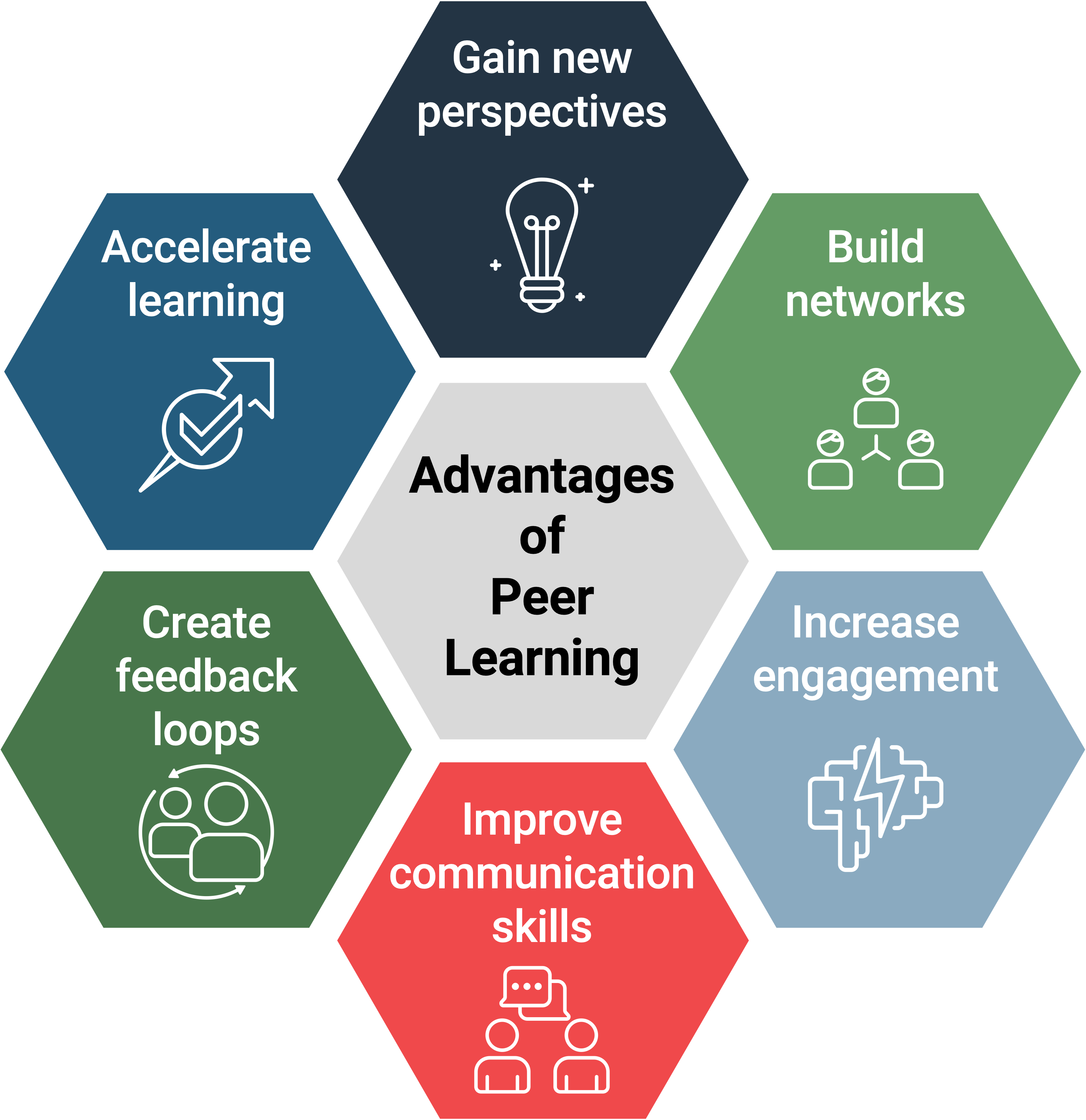Peer Learning/Shared Learning
What is peer learning?
Peer learning, also known as peer-to-peer learning or shared learning, is the process of peers learning with and from each other. It is achieved by engaging learners in experiences together or providing opportunities for them to share insights with one another.
What is the advantage of peer learning?
Peers are the second highest source of support for workers today (second to their mentor or boss) [1].
High-impact learning organisations deliver 13% more learning via social interaction, such as peer learning or shared learning [2].
Peers can be used to shift learners into the zone of proximal development (ZPD) – where learning is maximised and individuals are challenged and stimulated at just the right level [3]. By placing learners in pairs or groups, they use their combined abilities to accomplish tasks that would have been unable to complete individually. They share their knowledge and skills, and learn from each other.
Malcolm Knowles’s adult learning theory acknowledges that adults have breadth and depth of experiences to draw on and apply to new learning [4]. It proposes that adult learners may have ingrained ideas about things, however, sharing diverse experience and knowledge provides opportunities to gain new perspectives and understand different ways of thinking. This can be particularly impactful when creating cultural change that requires a mindset shift.
Other advantages of peer learning include:
- Accelerated learning
- Gain new perspectives
- Practice and reflection
- Build networks
- Develop comradery
- Build accountability
- Strengthen reasoning skills
- Create feedback loops
- Increase engagement
- Improve communication skills
How do you do peer learning?
Peer learning can be supported through group activities that encourage learners to brainstorm ideas, collaborate and draw on each other’s existing knowledge and skills to complete tasks.
Activities and methodologies to promote peer learning include:
- Discussions – pose a question or problem and ask learners to discuss or generate ideas in small groups before sharing with the whole group. Breaking into smaller groups first allows more learners to contribute than as a whole group
- Problem-Based Learning – create challenging problems that require groups to collaborate and work together to solve, fostering teamwork and interdisciplinary skills
- ‘Peer pods’ – groups of two or three learners who regularly meet during or after the formal learning experience, to share new insight, reflect on their experiences and further their learning. These groups can become great peer coaching networks that offer a safe space for learners to support and challenge each other
- Break-out rooms (for virtual workshops) – to manage small group activities, before debriefing as a whole group
References:
[1] [2] Degreed (2016). How the workforce learns in 2016. Retrieved from: https://get.degreed.com/hubfs/Degreed_How_the_Workforce_Learns_in_2016.pdf
[3] McLeod, S., (2012). Zone of Proximal Development. Retrieved from https://www.simplypsychology.org/Zone-of-Proximal-Development.html
[4] Knowles, M. (1984). The Adult Learner: A Neglected Species (3rd Ed.). Houston, TX: Gulf Publishing.



